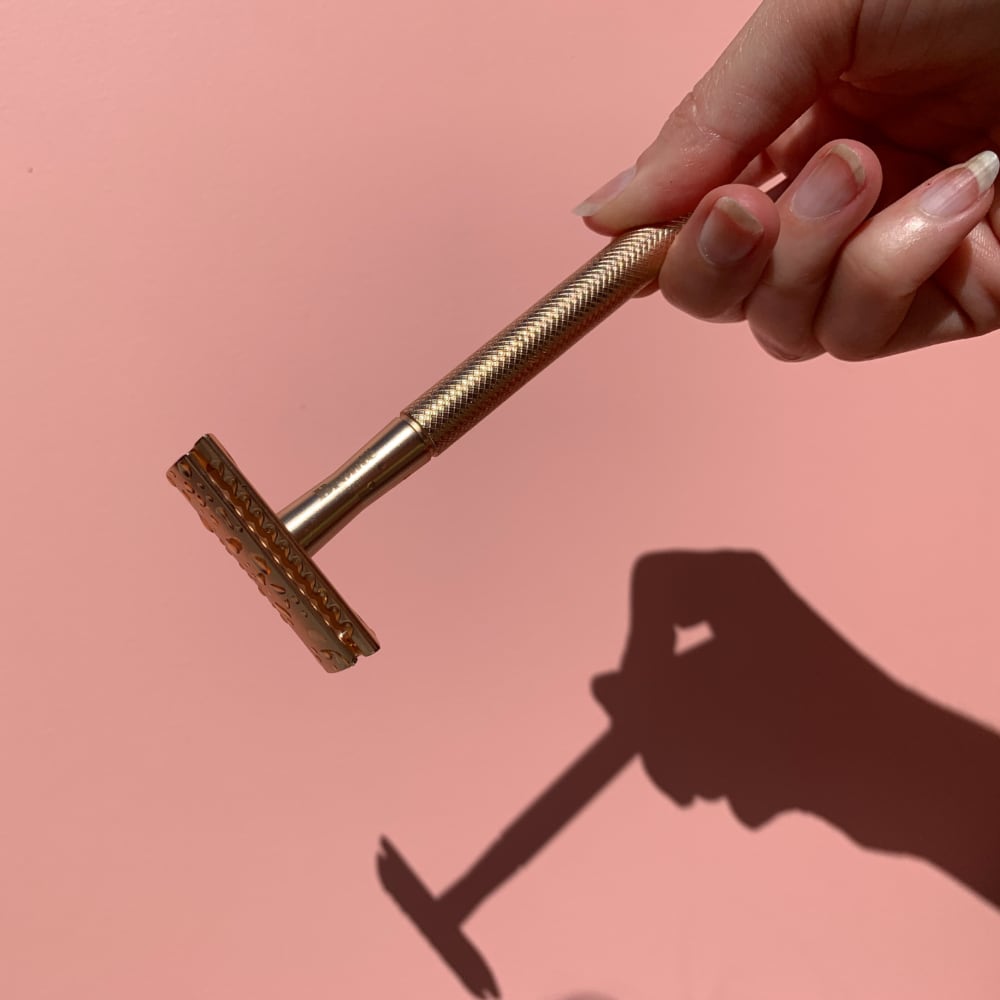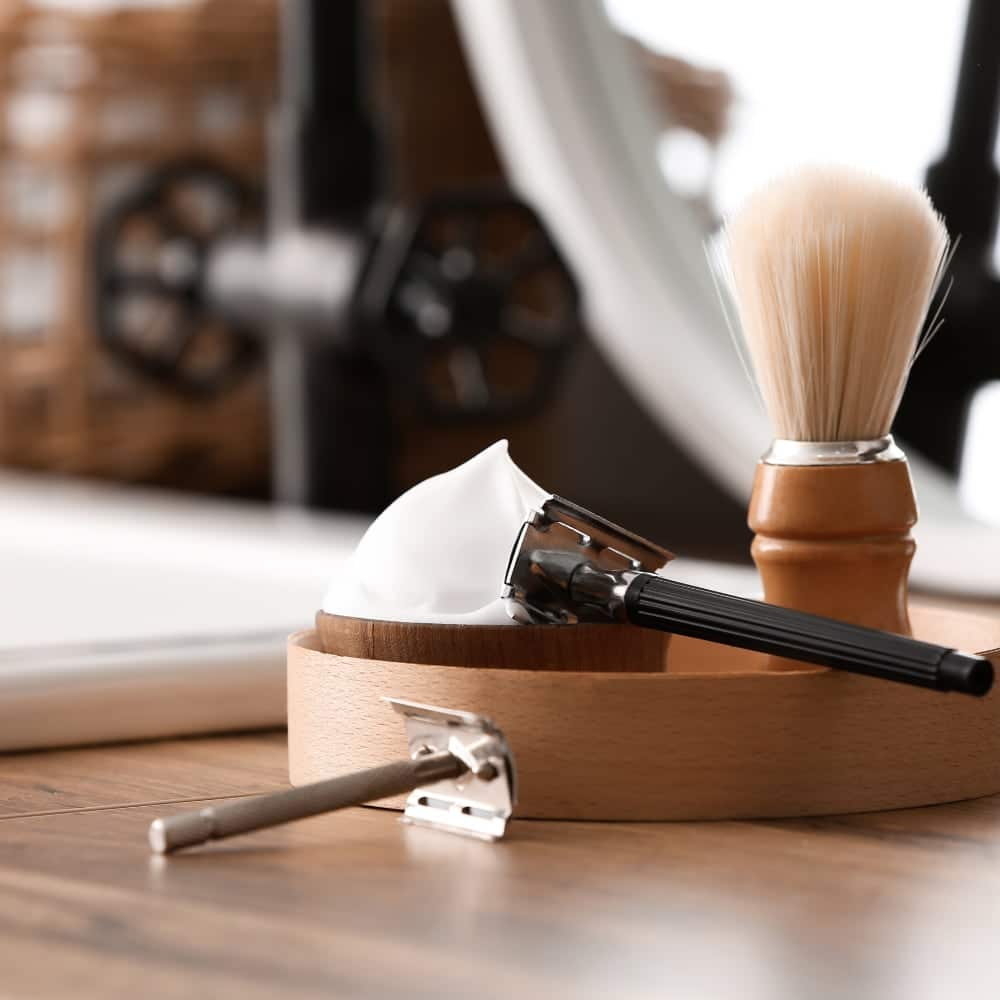Undecided between a safety and a cartridge razor? While both are great options for efficiently removing facial hair, there are notable limitations and advantages to both shaving systems.
Cartridge Razor vs Safety Razor: A Comparison
Here is a table that outlines many of the key differences between safety and cartridge razors:
| Feature | Safety Razors | Cartridge Razors |
|---|---|---|
| Shave Quality | Requires more finesse and attention to detail; good shave requires multiple passes and careful technique. | Beginner-friendly design; smooth results in a single pass. |
| Time | Can be done in under 5 minutes with practice. | Couple minutes at most. |
| Learning Curve | Requires effort and practice to perfect; more difficult to master. | Beginner-friendly; easy to learn. |
| Ingrown Hairs/Razor Burn | Less likely to cause razor bumps; irritation is often linked to technique. | More likely to cause razor bumps; multiple blades may cause more friction and dry the skin out. |
| Price | Handle can get costly, but will save in the long run with cheaper blades | Inexpensive to start, but blades are more costly and non-recyclable. |
| Versatility | Only suitable for facial hair use. | Suitable for facial hair as well as other body parts such as legs and chest. |
| Environment | Fully composed of metal; 100% recyclable. | Contain plastic and rubber components which are not biodegradable. |
Which is Right For You?
Cartridge razors offer a faster, more beginner-friendly shave with minimal learning curve, while safety razors require more finesse and attention to detail. However, if you’re willing to invest the time to learn, a safety razor can provide a more satisfying shave experience and significantly lower long-term costs.
Shave quality

First and foremost, the shave quality between both of these tools is completely different. Here’s why:
Cartridge razors have a beginner-friendly design that you don’t have to really think much about the how or why of shaving. Simply lather your face sufficiently with your preferred shaving cream and then make passes with the grain – it really is that easy.
Once you make the passes, the skin left behind should have a relatively smooth feel to it.
Safety razors, on the other hand, require a bit more finesse and attention to detail. You’ll need to first hold the blade at the proper cutting angle (roughly 30 degrees) and make short overlapping strokes with the grain. Additionally, when using a safety razor, you’ll need to be mindful of not adding too much pressure when making each pass.
Since safety razors don’t experience hysteresis (lift-and-cut) like a cartridge razor due to the reliance on only a single blade, you can expect to feel some “grit” to your skin. Folks who use the safety razor often will shave across and against the grain to achieve smoother skin.
Want to deepen your shaving knowledge? Learn about other shaving tools.
Time
How do these razors compare in terms of the total time required? Not nearly as much as you may think. While cartridge razors are undoubtedly faster, a person who has used a safety razor for a while can get a good shave done in under 5 minutes.
Where differences may be more pronounced will be during the start of your shaving journey.
This leads us to our next point…
Learning curve
Most folks learn to shave with a cartridge razor. They are easy to use and much more forgiving, leading most to master them in only a few shaves.
However, the same cannot be said for safety razors.
Safety razors require effort to learn. Most folks have the hardest time with the proper angle and pressure required to get a good shave. To further complicate matters, when shaving the neck, chin, or other areas with more curves, you’ll need to keep the blade at this proper angle while still making sure each pass is made with the grain.
Truth be told, you should expect to get a relatively decent shave after a week or two of persistent practice. However, it may take longer to get a shave that is as smooth as a cartridge razor.
That amount of attention to detail required to get the best shave possible is why many opt for the cartridge razor.
Ingrown hairs and razor burn

The stickiest point of contention between safety and cartridge razors will be general irritation and ingrown hairs.
Since most cartridge razors have several blades, they are likely to cut the hair slightly beneath the skin’s surface. As a result, when the hair begins to grow back, it may grow inwards and cause a painful razor bump. This typically happens on the neck for folks with exceptionally curly or coarse hair.
Safety razors are unlikely to cause razor bumps as the single blade will never cut the hair below the skin’s surface.
For general irritation, both systems can cause it. However, cartridge razors may be more likely as the multiple blades can cause more friction and dry the skin out. This becomes often becomes worse when the blades are dull and need to be replaced. However, the lubrication strip on cartridge razors help to prevent this.
Irritation resulting from safety razors is often the result of poor technique and can be easily corrected by reinforcing the proper angle and pressure required to get a good shave.
Price

When comparing safety and cartridge razors in terms of price, there are two considerations to make:
- Initial costs: Cartridge razors can be purchased for under $15 and will include a couple of starter blades. Safety razor handles will typically cost anywhere between $20 to $100, depending on the brand.
- Long-term costs: At roughly $3.75 per cartridge, and lasting approximately 15 shaves. Double-edge razor blades will cost roughly $0.08 to $0.15 per blade and will last about five shaves before needing to be replaced. This results in safety razors having a significantly lower long-term cost.
Another important point between these two systems is that cartridge razors have a proprietary blade system. So you are always beholden to the manufacturer for blades – there are no alternatives.
Most safety razors rely on standard double-edge razor blades. Meaning you can try multiple brands to determine which one works best for your skin and facial hair type.
It is worth noting that injector and single-edge blades used by popular safety razor brands Supply and OneBlade are different from double-edge blades. Despite this, the blades are still relatively inexpensive.
Versatility
The safety features found on cartridge razors make them much more versatile than safety razors. Whether you want to shave your chest, legs, groin, or other areas, a cartridge razor will be able to handle it without any major risks of cutting yourself.
Safety razors, however, are best for facial hair use only. However, women have found that using a safety razor on their legs can be a great alternative to shaving with a cartridge razor.
Environment
Cartridge razors contain plastic, rubber, and other materials that are not biodegradable. This makes them a poor choice for those who want to lessen their impact on the environment. While recycling programs by TerraCycle are available, they aren’t as widespread as they should be.
Safety razors are fully composed of metal and are, therefore, 100% recyclable. Thanks to this craftsmanship, the razors are reusable for years to come. The only thing that needs to be replaced is the blades.
Disposable Razors
Similar to cartridge razors, disposable razors are also not environmentally friendly. They are typically made of plastic and cannot be recycled. Additionally, disposable razors often have lower quality blades that can cause more irritation and razor bumps.
Should you want to learn more about the nuances, we have a comparison between cartridge and disposable razors as well.